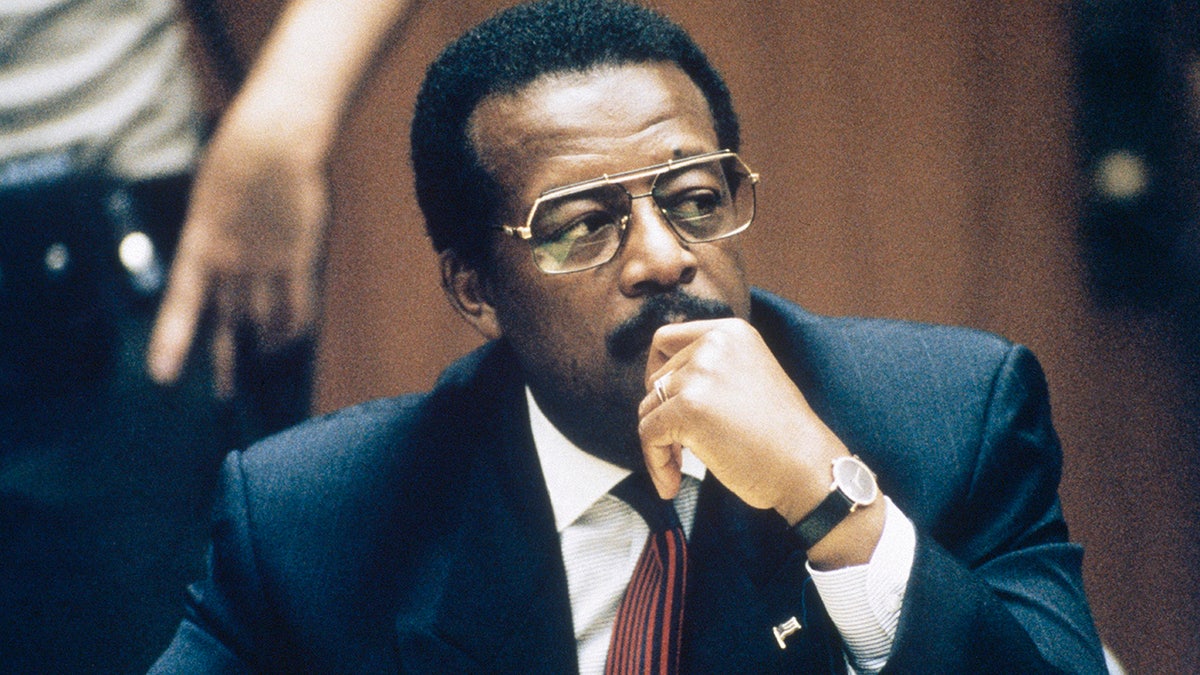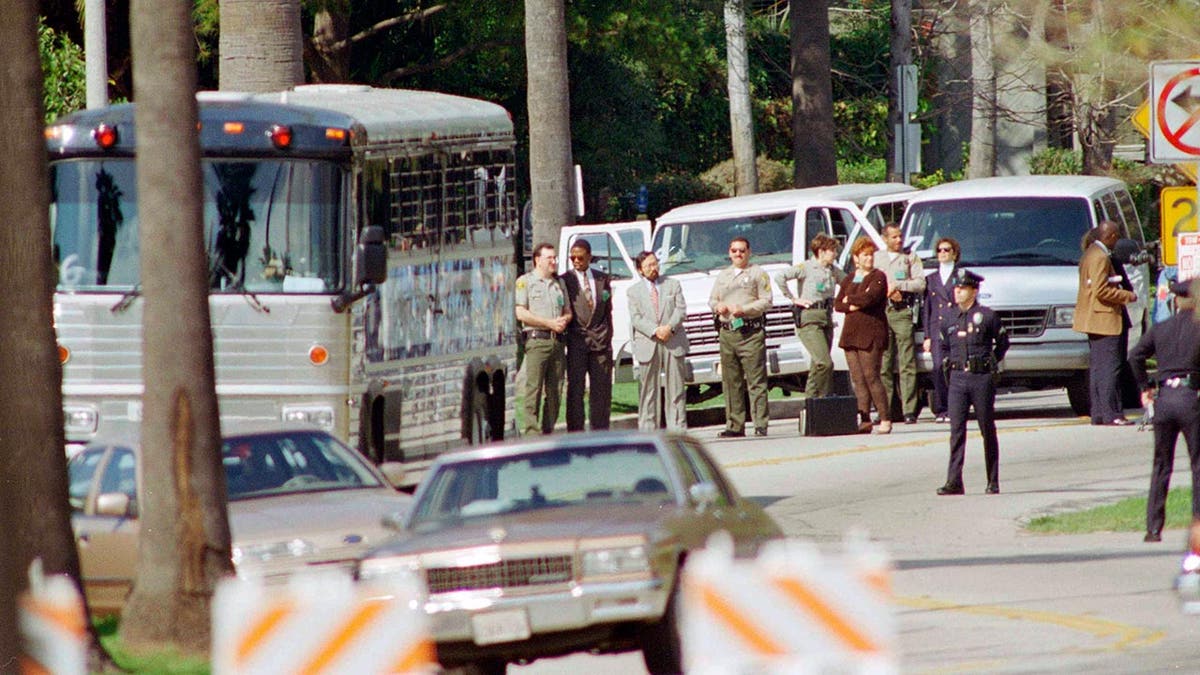OJ Simpson Crime Scene Images: The Untold Story Behind The Sensation
Let’s face it, the OJ Simpson case is one of the most talked-about trials in modern history. From the moment the trial began, it captured the world's attention like no other legal drama. The OJ Simpson crime scene images have been at the center of debates, theories, and endless speculation. But what really happened that night? And why are these images so significant? In this article, we’ll dive deep into the facts, uncover the truth, and explore why this case remains a cultural phenomenon to this day.
When you think about OJ Simpson, the first thing that comes to mind is probably the infamous “Trial of the Century.” It’s not just another murder case; it’s a saga filled with drama, twists, and controversies. The crime scene photos from the Nicole Brown Simpson and Ronald Goldman murders are often discussed but rarely seen by the public. Why? Because they’re graphic, sensitive, and legally protected. But that hasn’t stopped people from being curious.
This article isn’t just about the images themselves; it’s about understanding the context, the impact, and the legacy of the OJ Simpson case. So, whether you’re a true crime enthusiast or simply someone who wants to know more about one of the biggest trials in history, buckle up. We’re about to take you on a journey through the OJ Simpson crime scene images and everything that surrounds them.
Read also:Exploring Post Crescent Obituaries A Comprehensive Guide For Appleton Wisconsin
What Are OJ Simpson Crime Scene Images?
The OJ Simpson crime scene images refer to the photographs taken by law enforcement at the scene of the murders of Nicole Brown Simpson and Ronald Goldman on June 12, 1994. These images depict the brutal crime scene and have been the subject of intense scrutiny and debate ever since. The photos are not publicly available due to their graphic nature and legal restrictions, but they’ve played a crucial role in shaping public perception of the case.
For years, fans and critics alike have speculated about what exactly these images show. Some believe they reveal critical evidence that could have changed the outcome of the trial, while others argue they’re simply too disturbing to be shared. Regardless of where you stand, there’s no denying the significance of these images in the broader narrative of the OJ Simpson saga.
Why Are These Images So Controversial?
The controversy surrounding the OJ Simpson crime scene images stems from several factors. First, there’s the issue of privacy and respect for the victims and their families. Sharing such graphic content raises ethical questions about how far the media should go in covering high-profile cases. Second, there’s the legal aspect—these images are part of an ongoing legal battle, and their release could potentially compromise investigations or trials.
Lastly, there’s the public’s insatiable curiosity. People want to see for themselves what happened that night, and the lack of access to these images only fuels the speculation. It’s a classic case of “out of sight, out of mind” not working when it comes to true crime.
A Closer Look at the Crime Scene
Let’s break down the details of the crime scene itself. Nicole Brown Simpson and Ronald Goldman were found brutally murdered outside Nicole’s home in Brentwood, Los Angeles. The crime scene was chaotic, with evidence scattered across the area. Investigators collected dozens of items, including bloodstained clothing, a bloody glove, and footprints that allegedly matched OJ Simpson’s shoe size.
Here’s a quick rundown of the key elements:
Read also:Careersaldius Unlocking Opportunities And Building A Thriving Career
- Blood Evidence: Blood was found on the sidewalk, in the backyard, and even on a gate near the scene.
- The Bloody Glove: A leather glove stained with blood was discovered at the crime scene, later matched to a pair found at OJ Simpson’s estate.
- Footprints: Investigators identified footprints that matched shoes owned by OJ Simpson.
- Weapon: A knife believed to be the murder weapon was never officially recovered, adding to the mystery.
What Do the Images Reveal?
While the images themselves remain under wraps, experts who’ve seen them describe a harrowing scene. Blood splatter patterns, defensive wounds on the victims, and the positioning of the bodies all suggest a violent struggle. These details were critical in building the prosecution’s case against OJ Simpson, although the defense successfully cast doubt on the evidence during the trial.
One of the most debated aspects of the crime scene images is the condition of Nicole Brown Simpson’s body. Prosecutors argued that the injuries were consistent with a brutal attack, while the defense claimed they could have been inflicted post-mortem. This back-and-forth fueled endless speculation and kept the case in the public eye for years.
The Role of Media in the OJ Simpson Case
From the very beginning, the media played a massive role in shaping public opinion about the OJ Simpson case. The crime scene images, although not publicly released, were heavily referenced in news reports and documentaries. Journalists and commentators speculated endlessly about what the images might show, often influencing how people perceived the evidence.
But here’s the kicker: the media’s portrayal of the case wasn’t always accurate. Sensational headlines, biased reporting, and speculation ran rampant, creating a distorted view of the facts. This is why the OJ Simpson trial is often cited as a cautionary tale about the dangers of media interference in legal proceedings.
How the Media Used (or Misused) the Images
Even though the crime scene images weren’t released to the public, media outlets used sketches, reenactments, and expert analysis to give viewers an idea of what the scene might have looked like. Some outlets went as far as publishing grainy, low-quality images that allegedly came from the crime scene, sparking outrage and legal action.
This misuse of evidence highlights the ethical dilemmas faced by journalists covering high-profile cases. Where do you draw the line between informing the public and exploiting tragedy for clicks and ratings? It’s a question that continues to plague the media industry today.
Legal Implications of the Crime Scene Images
Legally speaking, the OJ Simpson crime scene images are protected under strict regulations. They’re considered evidence in a criminal case and are not available for public consumption. However, this hasn’t stopped unauthorized leaks and attempts to access the images over the years.
Courts have repeatedly ruled against releasing the images, citing concerns about victim privacy and the potential for influencing public opinion. This decision has been praised by some as a necessary safeguard, while others argue it deprives the public of crucial information.
Can the Public Ever See the Images?
While there’s no official word on whether the images will ever be released, it’s unlikely to happen anytime soon. Legal experts suggest that the images will remain sealed unless there’s a compelling reason to reopen the case or if the victims’ families consent to their release.
That said, technology has made it easier for people to access restricted content. Unauthorized leaks and deepfake technology have raised new concerns about how these images might be misused if they ever make their way into the public domain.
The Legacy of the OJ Simpson Case
More than two decades after the trial, the OJ Simpson case remains a cultural touchstone. It’s been the subject of countless documentaries, books, and even a hit TV series. The crime scene images, while not widely seen, continue to play a significant role in shaping the narrative around the case.
For many, the OJ Simpson trial represents a turning point in how we view celebrity crime, race relations, and the intersection of law and media. It’s a complex story that touches on issues still relevant today, making it a timeless subject for discussion.
What Can We Learn from This Case?
One of the biggest takeaways from the OJ Simpson case is the importance of evidence integrity. The crime scene images, along with other pieces of evidence, were central to the trial. However, mishandling and controversies surrounding the evidence cast doubt on the prosecution’s case, ultimately leading to OJ Simpson’s acquittal.
This case serves as a reminder of the need for transparency, accountability, and ethical standards in the legal system. It also underscores the dangers of sensationalism and bias in media coverage of high-profile cases.
Public Perception vs. Reality
Public perception of the OJ Simpson case has evolved over the years. Initially, many people believed OJ Simpson was guilty based on the evidence presented in court. However, as new information emerged and documentaries like “OJ: Made in America” shed light on the broader context, opinions began to shift.
The crime scene images, while not publicly available, have been a focal point of discussion. They’re seen by some as irrefutable proof of OJ Simpson’s guilt, while others argue they’re just another piece of a complex puzzle.
How Do the Images Shape Public Opinion?
The absence of the crime scene images has, ironically, made them even more influential. People tend to fill in the blanks with their own assumptions, often influenced by media narratives or personal biases. This phenomenon highlights the power of unseen evidence in shaping public opinion.
It also raises questions about the role of visual evidence in legal proceedings. Should juries rely solely on physical evidence, or should they consider the emotional impact of graphic images? These are questions that continue to be debated in legal circles today.
Conclusion: The OJ Simpson Crime Scene Images in Perspective
In conclusion, the OJ Simpson crime scene images are more than just photos—they’re a symbol of one of the most infamous cases in modern history. They’ve sparked debates, fueled speculation, and shaped public opinion in ways that few pieces of evidence ever have. While we may never see these images ourselves, their impact on the case and its legacy is undeniable.
So, what can we do moving forward? For starters, we can strive to be more informed and critical consumers of media. We can demand transparency and accountability from our legal system. And most importantly, we can remember the human cost behind these images—the lives lost and the families left to pick up the pieces.
As always, I’d love to hear your thoughts on this topic. Drop a comment below or share this article with your friends. Let’s keep the conversation going!
Table of Contents
- What Are OJ Simpson Crime Scene Images?
- Why Are These Images So Controversial?
- A Closer Look at the Crime Scene
- What Do the Images Reveal?
- The Role of Media in the OJ Simpson Case
- How the Media Used (or Misused) the Images
- Legal Implications of the Crime Scene Images
- Can the Public Ever See the Images?
- The Legacy of the OJ Simpson Case
- What Can We Learn from This Case?


